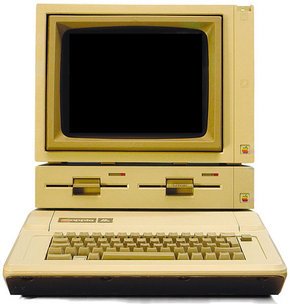Recently, I've answered a lot of similar topics regarding story and chapter length and I thought that a quick piece on ending things was in order from the girl with the 600 word one-shot.
There is a point in every chapter where things come to an end. No, I'm not talking about the point where you have written 1527 words and your character has said
"I love him," she said, blushing.
"You love who?" A voice entered behind them. He was dark, handsome, and definitely didn't belong here.
"Oh my god - "
AN: TBC!! HAHAHAHA! Im so EVVVVVIIIILLL!
That is the point where you've left some retarded soap star cliffhanger as an effort to draw your readers back. As a brief aside, stop doing that. It's annoying and pointless. Rely on your prose, your plot, your characterization and your characters to bring them back for more. A cliff hanger is when you leave something in the story open and unanswered. That example - well that's just bad writing. And, yes, you can tell the people from Days of our Lives that I said that.
At this point, you have to ask yourself "What is the purpose of the ending?" because nothing should be in your writing without purpose. An ending is to give the reader a sense of finality, to tie up any loose ends and to give them closure. You should never be surprised to happen upon a stories ending - things need to come to their logical conclusion.
There are a ton of ways to end a chapter. I assure you, I'm not about to be horribly pompous, one of the joys of having stories of your own is that you've written them and, thus, you can use them and commentate upon them in whatever way you see fit without offending the author.
The Conclusion:
Just like in an expository essay, your chapters can have conclusions. From the afor mentioned, uber-short, one shot I wrote, Promises He Never Should Have Made, this passage ended the thing, revealing that the previous 500 words were nothing more than a memory.
As he boards the train today, the train that will take him back to Grimmuald
Place for another meeting of the Order of the Phoenix, hugs his daughter and
kisses his young wife, he can see her in the distance, hand in hand with her
prince charming, and he's thinking of all of the promises he never should have
made.
Few things we've done here - we've ended the storyline, not just the story. A lot of one-shots, and even multi-chaptered stories, can leave you wondering what happened afterwards. Did they ever get back together? Whatever happened to her mom? There's nothing wrong with that at all, it can be nice to leave the reader to imagine their own conclusion to a story, but if you're starved for a way to end something, a few sentences like this can make it a lot easier to do. The other thing we've done - and the thing that makes us certain that the chapter is over, is tied it back to the title.
The Real Cliffhanger:
At the risk of sounding insanely self-important, I like to think that the cliff hanger at the end of the first chapter of my story, Chronicles of Life, is what a real cliffhanger looks like. No stone in the chapter itself has been left unturned - no sentence cut off midway to hold the big reveal over until the next episode. The cliffhangers here lie within Who Soren James is, Why he is there, What he did to make her so angry, etc... rather than a great big "dun-duh-duh-duh!"
"Jamie. Jamie. Jamie." The room was noisy and, once again, all the freaks were out. "If you want another one of those," you gestured to his near empty rock glass, "you're going to have to quit trying to grab my ass every time I bring you a drink. Got it?" Jamie nodded, looking scorned, and you turned from the table.
Making it only a few paces before a strong hand gripped your wrist. "So, the next round is on you then?" Your voice was severe - deadly.
Attempting to wrench yourself free, the regulars watched as you turned on the brave soul restraining you.
There was the briefest moment before recognition settled in and as it did, the fire in your eyes intensified. In a mere second's contemplation, there was a crash of breaking glass, an intake of breathe, and the resounding crack of your palm colliding with his cheek.
Soren James was standing before you, a red welt growing on his face, but the expression of smugness, present since you'd known him, refused to fade.
The End:Sometimes, you will meet a chapter that has neither a conclusion or a cliffhanger. True, every chapter does leave a reader with some sense of suspense - they want to know what is going to happen next - but when something simply reaches 'the end' it means that the author has done nothing to increase their sense of suspense from that of the normal. In the next passage, from the first chapter of Extempore, you will see that the chapter doesn't leave you with any particular sense of closure, but also not with any particular sense of dire need to know what happens in the future.
A particularly fragrant bunch of flowers caught your attention on the side of
the path. Before your mind could stop you, your arm was outstretched, snapping
the stem of a yellow daisy.
The motion was entirely instinctive and you'd managed it without dropping stride but now, nearing the Apparition safe point, you felt awkward and out of place with your daisy and the girl that wasn't yours. For what certainly wasn't the first time, you were reminded briefly of Lily. You had shared many such moments with her as a boy.
"I suspect Mad-Eye will want to hear the good news straight away," you said to break the silence.
"Probably." she added by way of reply. "That and I have to get out of these shoes before I fall. I think the charm I put on them is starting to wear out."You stifled the
unintentional laughter.
"I had rather wondered how you were managing." She grimaced and disappeared with a quiet Pop!
Just as with cliffhangers and conclusions, chapters that end in this fashion can have a wonderful appeal to the author and the reader as well. Endings of this nature are fantastic for "middle" chapters - after you have introduced your characters but before the plot begins to reach it's high point, a chapter that ends in this fashion can lend a story a much needed sense of calm which generally gives itself over to realism.
The Open-End: Another very popular variety of ending is the open ending. Many authors employ this technique more unintentionally than not, but it is still a valuable option to consider in some cases.
In any story, thecomponentsy componants and many different questions raised. To use another sample from Chronicles of Life, this one from the final chapter rather than the first, you will see that while the story has come to an end and the ultimate goachieveden acheieved, the story as the reader knows it, may not feel final.
Note: In order to understand this particular sample, you may find it valuable to read the story in question which can be found
here on
harrypotterfanfiction.com.
The room had taken on a somewhat strange glow when you opened your eyes again,
rubbing the haze out of them. Soren's wrist lay uncomfortably under your neck and your stomach was growling even more painfully. Rolling over slightly to pry
yourself free, an arm wrapped around your waist, twining it's fingers lazily
over the contours of your waistline.
"Go back to sleep, Lexi."
When did it hit you that what you were feeling was love?
What the final sentance reveals is that she does in fact love Soren - but what this passage doesn't give away is whether she stays with him or leaves - whether they live happily ever after - whether she goes back to work or if she and her mother ever make peace. Employing an open ending can be a tricky thing. It invariably leaves any astute reader with a sense of longing - they want to know the answers to all of the unanswered questions but, at the same time, walking away from a story with a sense of unrest can makeprevalentlyore prevelantly in your mind.
Use caution, however, when employing this method. In order for it to work, you have to know quite clearly what your story is about. For Chronicles of Life, the story was never about whether or not she stayed with Soren, it was about her growing up enough and coming into her own to realize that she loved him. If it had been the other way around, an ending of this sort would have left the story incomplete.
As with all things, moderation and variety is key. You certainly can't end all of your chapters with a clear and finite conclusion and to end them all with a cliffhanger leaves an unbalanced and largely lop-sided story that is so wrought with suspense and going's-on that it begins to border melodrama. Combining the different methods of writing to achieve a balance will give your pieces - short, novella or novel-length - a sense of realism and cohesion.

 Computers for home use have not always been as prolific as they are today and, even today, it is sometimes hard to remember that most
Computers for home use have not always been as prolific as they are today and, even today, it is sometimes hard to remember that most 